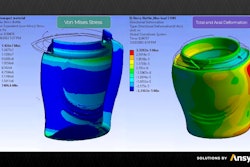
Trade dress deals with visual appearance: how an offering in commerce (i.e., trade) looks (i.e., is dressed), for purposes of identifying the source of that offering. For CPGs, package design is trade dress. Trade dress is a type of intellectual property (IP), a creation of the mind (i.e., intellectual) and owned (i.e., property) by its creator. Package design as trade dress is protected by laws against infringement (appropriation) that set the requirements that a brand owner (as plaintiff) must satisfy to prevail. Those requirements reflect the interrelationship among the disciplines of packaging, marketing, and legal.
The first requirement is that the brand owner provides a definition of the package design/trade dress. In so doing, the brand owner cannot just cite the elements (e.g. colors, fonts, images, etc.). Instead, the definition must be based on how the elements combine for an overall visual effect. Separate from a legal setting, this requirement is akin to the gestalt school of design where the whole is more than the sum of its parts. Various package design research methodologies are based on that concept.
Another requirement is that the package design be inherently distinctive, meaning that its appearance, itself, sets it apart. That’s legalese for shelf appeal or shelf impact, which is at the core of packaging’s role as a marketing tool. The package design/trade dress at the time of product launch and all subsequent revisions will affect the brand-owner’s ability to argue that the package design/trade dress is inherently distinctive. A package design that has been registered as trade dress with the U.S. Patent and Trademark Office (USPTO) carries the assumption of being inherently distinctive, because the application process imposes criteria in that regard. Even if the package design is not registered, the brand owner still can make the claim of inherently distinctive.
A related requirement—more of an option—is that of acquired distinctiveness, wherein consumers associate the package design/trade dress with a particular source, even in the absence of inherent distinctiveness. Acquired distinctiveness is achieved through a long presence in the marketplace, even achieving secondary meaning, in the form of additional positive associations made by consumers. Newcomers, therefore, don’t have the privilege of asserting acquired distinctiveness. Traditionally, it’s the province of category leaders and iconic brands. That said, what brand owner does not aspire to join such ranks, or if already a member, to retain membership? It can’t be done without optimal leveraging of package design/trade dress, essential for product positioning and mind mapping.
Yet another requirement is that the package design/trade dress be non-functional. In the non-legal sense, a function of packaging is communication, whereby the packaging is a medium for conveying information. For many CPGs, packaging is the main—often only—medium of consumer-directed communication. In the legal sense, however, the concern is with appearance, how the package design/trade dress looks and not what it does. The two focuses are not mutually exclusive nor contradictory. In the practical sense, they are inseparably linked.
























